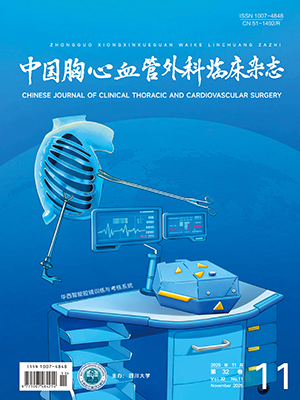| 1. |
Sung H, Ferlay J, Siegel RL, et al. Global cancer statistics 2020: GLOBOCAN estimates of incidence and mortality worldwide for 36 cancers in 185 countries. CA Cancer J Clin, 2021, 71(3): 209-249.
|
| 2. |
Liu X, Yu Y, Wang M, et al. The mortality of lung cancer attributable to smoking among adults in China and the United States during 1990-2017. Cancer Commun (Lond), 2020, 40(11): 611-619.
|
| 3. |
Fan Y, Jiang Y, Gong L, et al. Epidemiological and demographic drivers of lung cancer mortality from 1990 to 2019: results from the Global Burden of Disease Study 2019. Front Public Health, 2023, 11: 1054200.
|
| 4. |
Global Burden of Disease Collaborative Network. Spatial, temporal, and demographic patterns in prevalence of smoking tobacco use and attributable disease burden in 204 countries and territories, 1990-2019: a systematic analysis from the Global Burden of Disease Study 2019. Lancet, 2021, 397(10292): 2337-2360.
|
| 5. |
Global Burden of Disease Collaborative Network. Smoking prevalence and attributable disease burden in 195 countries and territories, 1990-2015: a systematic analysis from the Global Burden of Disease Study 2015. Lancet, 2017, 389(10082): 1885-1906.
|
| 6. |
Global Burden of Disease Collaborative Network. Global burden of 369 diseases and injuries in 204 countries and territories, 1990-2019: a systematic analysis for the Global Burden of Disease Study 2019. Lancet, 2020, 396(10258): 1204-1222.
|
| 7. |
胡守财, 陶堰成, 马浩天, 等. 1990—2019年中国非风湿性瓣膜性心脏病疾病负担及变化趋势分析. 中国循环杂志, 2024, 39(8): 806-812.Hu SC, Tao YC, Ma HT, et al. Disease burden and changing trend of non-rheumatic valvular heart disease from 1990 to 2019 in China. Chin Circ J, 2024, 39(8): 806-812.
|
| 8. |
Rehman S, Rehman E, Ikram M, et al. Cardiovascular disease (CVD): assessment, prediction and policy implications. BMC Public Health, 2021, 21(1): 1299.
|
| 9. |
胡守财, 杨成龙, 马浩天, 等. 1990—2019年中国饮酒所致的食管癌疾病负担趋势及男女对比分析. 中国胸心血管外科临床杂志, 2025, 32(4): 500-507.Hu SC, Yang CL, Ma HT, et al. Trends in Chinese esophageal cancer burden of disease due to high alcohol use and comparative analysis of males and females from 1990 to 2019. Chin J Clin Thorac Cardiovasc Surg, 2025, 32(4): 500-507.
|
| 10. |
黄俊, 江晶晶, 邵慧娟, 等. 1990—2019年我国酒精性肝病的疾病负担分析. 现代预防医学, 2023, 50(20): 3800-3811.Huang J, Jiang JJ, Shao HJ, et al. Disease burden analysis of alcoholic liver disease in China, 1990-2019. Mod Prev Med, 2023, 50(20): 3800-3811.
|
| 11. |
Yang D, Liu Y, Bai C, et al. Epidemiology of lung cancer and lung cancer screening programs in China and the United States. Cancer Lett, 2020, 468: 82-87.
|
| 12. |
Tang S, Meng J, Zhao X, et al. Trends of ischemic heart disease mortality attributable to smoking in the five countries with the highest number of smokers during 1990-2019: an age-period-cohort analysis. Arch Med Sci, 2024, 20(1): 43-53.
|
| 13. |
Ma J, Jemal A, Fedewa SA, et al. The American Cancer Society 2035 challenge goal on cancer mortality reduction. CA Cancer J Clin, 2019, 69(5): 351-362.
|
| 14. |
Zhang R, He Y, Wei B, et al. Nasopharyngeal carcinoma burden and its attributable risk factors in China: estimates and forecasts from 1990 to 2050. Int J Environ Res Public Health, 2023, 20(4): 2926.
|
| 15. |
Deng Y, Zhao P, Zhou L, et al. Epidemiological trends of tracheal, bronchus, and lung cancer at the global, regional, and national levels: a population-based study. J Hematol Oncol, 2020, 13(1): 98.
|
| 16. |
Global Burden of Disease Collaborative Network. Global, regional, and national burden of respiratory tract cancers and associated risk factors from 1990 to 2019: a systematic analysis for the Global Burden of Disease Study 2019. Lancet Respir Med, 2021, 9(9): 1030-1049.
|
| 17. |
Hansen MS, Licaj I, Braaten T, et al. Smoking related lung cancer mortality by education and sex in Norway. BMC Cancer, 2019, 19(1): 1132.
|
| 18. |
Bray F, Laversanne M, Sung H, et al. Global cancer statistics 2022: GLOBOCAN estimates of incidence and mortality worldwide for 36 cancers in 185 countries. CA Cancer J Clin, 2024, 74(3): 229-263.
|
| 19. |
Frick C, Rumgay H, Vignat J, et al. Quantitative estimates of preventable and treatable deaths from 36 cancers worldwide: a population-based study. Lancet Glob Health, 2023, 11(11): e1700-e1712.
|
| 20. |
Catelan D, Biggeri A, Bucchi L, et al. Epidemiologic transition of lung cancer mortality in Italy by sex, province of residence and birth cohort (1920-1929 to 1960-1969). Int J Cancer, 2023, 153(10): 1746-1757.
|
| 21. |
Guo L, Zhu C, Cai L, et al. Global burden of lung cancer in 2022 and projected burden in 2050. Chin Med J (Engl), 2024, 137(21): 2577-2582.
|
| 22. |
Desjardin JT, Chikwe J, Hahn RT, et al. Sex differences and similarities in valvular heart disease. Circ Res, 2022, 130(4): 455-473.
|
| 23. |
Jin EH, Han K, Shin CM, et al. Sex and tumor-site differences in the association of alcohol intake with the risk of early-onset colorectal cancer. J Clin Oncol, 2023, 41(22): 3816-3825.
|
| 24. |
Li S, Chen H, Man J, et al. Changing trends in the disease burden of esophageal cancer in China from 1990 to 2017 and its predicted level in 25 years. Cancer Med, 2021, 10(5): 1889-1899.
|
| 25. |
Yu G, Gong X, Xu Y, et al. The global burden and trends of four major types of heart disease, 1990-2019: a systematic analysis for the Global Burden of Disease Study 2019. Public Health, 2023, 220: 1-9.
|




